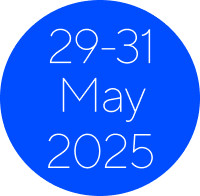Chair: Sonia Roa-Alcaino (Chile)
Speakers: Faizah Abdullah Djawas (Indonesia), Cristine Homsi Jorge (Brazil), Ayako Yamamoto (Japan)
-
To understand and articulate the broader dimensions of women’s health, recognizing the role of biological and sociocultural factors in their health profile and global disparities.
-
To identify the global and specific roles of physiotherapists in evidence-based education, prevention, and treatment of various conditions impacting women’s health in different clinical settings.
-
To learn about strategies and experiences of success to make an impact on women’s health in the fields of education, clinical practice, and public policies in different cultural contexts.
Women’s health disparities are a matter of special concern due to discrimination rooted in sociocultural factors, leading to understudied health issues for women[1]. Despite having common diagnoses with men, women often experience different origins and treatments for these conditions[2,3]. For instance, women are 50% more likely to receive an initial misdiagnosis after a heart attack than men and have a greater risk of not receiving medication to prevent a second attack[4,5]. This highlights the need for a broader definition of women’s health beyond reproductive issues.
The narrow definition of women’s health, which remains synonymous with reproductive health, is a significant barrier to achieving optimal well-being for women[6]. This limited perspective is reflected in the training of health professionals, excluding knowledge about the main barriers that women face and influence their welfare and functioning[7]. To address this issue, it is crucial to expand the definition of women’s health to include the entire life course of a woman and its socio-economic and cultural determinant s, in addition to biological differences, as the unique basis for prevention, treatment, and rehabilitation.
Physiotherapy has reached good levels of scientific evidence in general and specifically in the treatment and prevention of various gynecological, obstetric, mastological and oncological problems [8]. Despite this, women’s access to physical therapy treatment is limited worldwide. Urogynaecological conditions for example are associated with the main chronic diseases requiring rehabilitation. Despite the first-line treatment of the most prevalent types of non-neurogenic urinary incontinence in women being physiotherapy, this condition remains underdiagnosed and undertreated, with an estimate that only 12% of patients seeking treatment receive care[9].
Physiotherapists must recognize the multiple determinants of women’s health and the barriers to their access to rehabilitation and acquisition of a healthy lifestyle. This requires rapid incorporation of new knowledge about women’s health throughout physiotherapy practice in the field of rehabilitation. Physiotherapists must also be aware of the impact of global health issues, such as the demands of an aging population, physical activity, health literacy, health systems funding, and topics identified in the Rehabilitation 2030 Agenda and the Sustainable Development Goals[10].
This session will explore the influence of socioeconomic and cultural determinants on women’s health. Global disparities in the morbidity and mortality profile of women will be discussed and the role of physiotherapists in improving women’s health indicators.
Understanding and applying an expanded concept of women’s health have the potential to impact both clinical practice and public policies, empowering physiotherapists to be agents of transformation for women´s health equity globaly.
1.WHO | Women’s health [Internet]. WHO. World Health Organization; 2018 [citado 2 de junio de 2019]. Disponible en: https://www.who.int/topics/womens_health/en/
2. It’s time to expand the definition of ‘women’s health’. Nature. 2021;596(7870):7.
3. Gkiouleka A, Wong G, Sowden S, Bambra C, Siersbaek R, Manji S, et al. Reducing health inequalities through general practice. Lancet Public Heal [Internet]. 2023;8(6):e463–72. Disponible en: http://dx.doi.org/10.1016/S2468-2667(23)00093-2
4. British Hearth Foundation. MI gender bias costing women’s lives, new BHF campaign warns.
5. Pacheco C, Mullen KA, Coutinho T, Jaffer S, Parry M, Van Spall HGC, et al. The Canadian Women’s Heart Health Alliance Atlas on the Epidemiology, Diagnosis, and Management of Cardiovascular Disease in Women — Chapter
5. Sex- and Gender-Unique Manifestations of Cardiovascular Disease. CJC Open [Internet]. 2022;4(3):243–62. Disponible en: https://doi.org/10.1016/j.cjco.2021.11.006
6. Mattson S, Editor G. An Update on Global Women ’ s Health. J Obstet Gynecol Neonatal Nurs [Internet]. 2017;(March):9–10. Disponible en: http://dx.doi.org/10.1016/j.jogn.2016.11.012
7. Meleis AI. News From the International Council on Women’s Health Issues. Health Care Women Int. 2015;36(9):965–8.
8. Sacomori C, Elkins MR. Women’s health. J Physiother [Internet]. 2023;69(2):68–9. Disponible en: https://doi.org/10.1016/j.jphys.2023.02.013
9. Minassian V. Predictors of Care Seeking in Women with Urinary Incontinence. Neurourol Urodyn [Internet]. 2012;31(4):470–4. Disponible en:https://www.ncbi.nlm.nih.gov/pmc/articles/PMC3348577/pdf/nihms371789.pdf
10. Goals SD. WHO-EURO-2019-2384-42139-58051-eng. (1):1–17.
See the 24 focused symposia to be presented at congress.
Find out who the key speakers at congress will be.
Find out which clinical topics will be covered in these discussion-based seminars.




